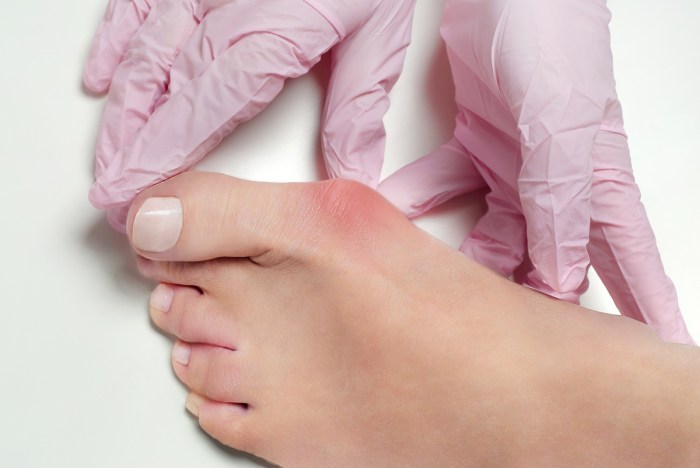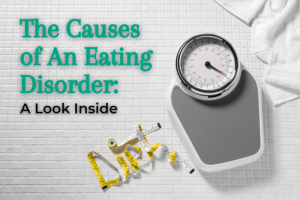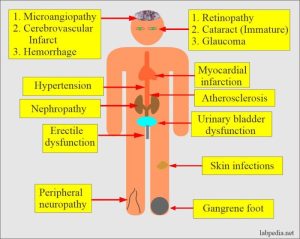
Step right up to learn all about bunions treatment options! Get ready for a journey through non-surgical remedies, cosmetic surgery insights, foot health tips, and more. This isn’t just any guide – it’s your ticket to happy, healthy feet!
Whether you’re dealing with bunions or just curious about foot care, this comprehensive overview will have you feeling informed and empowered in no time. So, kick off your shoes and let’s dive in!
Bunions Treatment Options
Bunions are a common foot condition that can cause pain and discomfort. While surgery is often considered the most effective treatment for severe cases, there are several non-surgical treatment options available for managing bunions.
Orthotic Devices
Orthotic devices, such as bunion splints or pads, can help to alleviate pressure on the bunion and provide support to the affected area. These devices can help to realign the toe joint and reduce pain associated with bunions.
Pain Relievers and Anti-Inflammatory Medications
Over-the-counter pain relievers, such as acetaminophen or ibuprofen, can help to reduce pain and inflammation caused by bunions. These medications can be used in conjunction with other treatment options to provide relief from bunion symptoms.
Physical Therapy Exercises
Physical therapy exercises can help to strengthen the muscles in the foot and improve flexibility, which can reduce the severity of bunion symptoms. These exercises may include toe stretches, foot rolls, and calf stretches to improve overall foot function and reduce pain associated with bunions.
Cosmetic Surgery
Cosmetic surgery for bunions is a popular option for individuals looking to improve the appearance of their feet while also addressing the pain and discomfort caused by the deformity. There are different types of cosmetic surgery procedures available to correct bunions, each with its own benefits and risks.
Types of Cosmetic Surgery Procedures
- Bunionectomy: This surgical procedure involves removing the bony bump on the side of the foot and realigning the bones of the big toe.
- Osteotomy: In this procedure, the surgeon cuts and realigns the bones in the toe joint to correct the deformity.
- Arthrodesis: This surgery involves fusing the bones of the big toe joint to provide stability and reduce pain.
Benefits and Risks
- Benefits: Cosmetic surgery can improve the appearance of the foot, reduce pain and discomfort, and restore normal function.
- Risks: Some risks associated with cosmetic bunion surgery include infection, nerve damage, and the possibility of the bunion returning.
Before and After Results
Before cosmetic bunion surgery, the patient may have a noticeable bony bump on the side of the foot and experience pain while walking. After surgery, the bump is reduced, the foot appears more symmetrical, and the pain is significantly reduced.
Recovery Process and Post-Operative Care
- Recovery: The recovery time for cosmetic bunion surgery can vary depending on the type of procedure performed, but typically involves wearing a surgical shoe or boot for several weeks and avoiding weight-bearing activities.
- Post-Operative Care: It is important to follow the surgeon’s instructions for post-operative care, which may include keeping the foot elevated, applying ice, and taking prescribed medications to manage pain and prevent infection.
Foot Health
Maintaining good foot health is essential to overall well-being, as the feet are the foundation of our body’s movement and support. Bunions, a common foot condition, can have a significant impact on foot health if left untreated. Here, we will discuss how bunions can affect foot health, common foot conditions that may coexist with bunions, preventive measures to avoid bunions, and tips for proper foot care to alleviate bunion symptoms.
Impact of Bunions on Foot Health
Bunions can lead to pain, inflammation, and deformity in the affected toe joint, making it difficult to walk or wear shoes comfortably. As the bunion progresses, it can alter the alignment of the foot and affect the overall biomechanics of walking, potentially causing pain in other areas of the foot, such as the arch or heel.
Common Foot Conditions Associated with Bunions
- Hammertoes: A condition where the toes bend abnormally at the middle joint, often seen alongside bunions.
- Calluses and corns: Thickened, hardened areas of skin that may develop due to friction and pressure from bunions.
- Plantar fasciitis: Inflammation of the thick band of tissue that runs across the bottom of the foot, commonly linked to altered foot mechanics from bunions.
Preventive Measures for Good Foot Health
- Choose well-fitted shoes with adequate support and room for toes to prevent the development or worsening of bunions.
- Avoid high heels and narrow-toed shoes that can exacerbate bunions and lead to other foot problems.
- Maintain a healthy weight to reduce pressure on the feet and lower the risk of developing bunions.
Tips for Alleviating Bunion Symptoms
- Apply ice packs to reduce inflammation and pain in the bunion area.
- Use cushioning pads or orthotic inserts to provide support and relieve pressure on the bunion.
- Perform gentle stretching exercises to improve flexibility and strengthen the muscles around the bunion.
Heart Disease
Heart disease is a serious condition that affects millions of people worldwide. It is important to understand the potential connection between heart disease and bunions, as well as how managing heart health can impact bunion development and treatment.Bunions are often associated with certain risk factors that can also contribute to heart disease. For example, obesity, high blood pressure, and diabetes are common risk factors for both conditions.
These conditions can lead to poor circulation, which may affect the health of your feet and increase the likelihood of developing bunions.Managing heart health while dealing with bunions is crucial for overall well-being. It is essential to maintain a healthy diet, exercise regularly, and monitor your blood pressure and cholesterol levels. By taking care of your heart, you can also improve blood flow to your feet and potentially reduce the risk of developing or worsening bunions.Making lifestyle changes that benefit both heart health and bunion treatment is key.
This includes maintaining a healthy weight, wearing supportive footwear, and avoiding high heels or shoes that squeeze your toes. Additionally, incorporating activities like walking or swimming into your routine can help improve circulation and strengthen the muscles in your feet.
Lifestyle Changes for Heart Health and Bunion Treatment
- Follow a balanced diet rich in fruits, vegetables, whole grains, and lean proteins.
- Avoid smoking and limit alcohol consumption to reduce the risk of heart disease and improve circulation.
- Engage in low-impact exercises like yoga or cycling to strengthen foot muscles and improve overall cardiovascular health.
- Monitor your blood pressure and cholesterol levels regularly to catch any issues early and prevent complications.
- Avoid prolonged periods of standing or walking to reduce pressure on the feet and prevent bunion pain.
Health Diabetes

Individuals with diabetes need to be extra cautious when dealing with bunions, as diabetes can complicate the treatment options and affect the healing process. Diabetes can impact the nerves and blood flow in the feet, increasing the risk of infections and slow healing.
Relationship Between Bunions and Diabetes
- Bunions can develop more quickly and become more severe in individuals with diabetes due to poor circulation and nerve damage.
- Diabetes can also weaken the bones and make them more susceptible to deformities like bunions.
Impact of Diabetes on Bunion Treatment
- Individuals with diabetes may have a higher risk of complications during bunion surgery, such as infection or delayed healing.
- Diabetic neuropathy can affect the sensation in the feet, making it harder to detect issues with the bunion post-surgery.
Special Considerations for Diabetic Bunion Treatment
- Consult with a podiatrist or foot specialist experienced in treating diabetic patients to develop a customized treatment plan.
- Monitor blood sugar levels closely before and after bunion surgery to ensure proper healing.
Tips for Diabetic Foot Care
- Inspect your feet daily for any cuts, sores, or signs of infection, including the bunion area.
- Avoid walking barefoot to prevent injuries and protect your feet with comfortable, supportive footwear.
- Maintain good blood sugar control through diet, exercise, and medication to promote overall foot health.
Eating Disorders
Eating disorders, such as anorexia nervosa and bulimia, can have serious implications on physical health, including potential impacts on foot conditions like bunions. Individuals with eating disorders may experience nutritional deficiencies that can affect bone health and overall foot structure, potentially exacerbating existing bunions or increasing the risk of developing them.
Links between Eating Disorders and Bunions
Eating disorders can lead to poor bone density and weakened ligaments due to inadequate nutrition, which can contribute to the progression of bunions. The lack of essential nutrients like calcium and vitamin D can impair bone growth and repair, making the feet more susceptible to deformities like bunions.
Impact on Bunion Treatment Outcomes
Individuals with eating disorders may face challenges in bunion treatment outcomes due to compromised healing processes and increased risk of complications. Poor nutritional status can delay recovery from bunion surgery or conservative treatments, leading to prolonged discomfort and potential recurrence of bunions.
Comprehensive Care for Individuals with Eating Disorders and Bunions
It is crucial to address both the eating disorder and bunion condition simultaneously to ensure comprehensive care. A multidisciplinary approach involving healthcare professionals such as dietitians, therapists, podiatrists, and orthopedic surgeons may be necessary to provide holistic treatment and support for these individuals.
Strategies for Maintaining Overall Health
- Establish a balanced and nutrient-rich diet to support bone health and healing processes.
- Seek professional help for the eating disorder through therapy and counseling.
- Follow the recommended treatment plan for bunions, including orthotics, physical therapy, or surgery if needed.
- Stay physically active within the limits of individual health and recovery.
- Prioritize self-care and mental health support to address underlying issues contributing to the eating disorder and overall well-being.
Concluding Remarks

From exploring non-surgical solutions to diving into the potential links between bunions and heart disease, this guide has covered it all. Remember, taking care of your feet is a crucial part of your overall health, so don’t neglect those toes!
General Inquiries
Can bunions be treated without surgery?
Absolutely! Non-surgical options like orthotic devices, pain relievers, and physical therapy exercises can help manage bunions effectively.
Is cosmetic surgery the only solution for bunions?
No, cosmetic surgery is just one of the treatment options. There are various non-invasive methods to explore before considering surgery.
How can foot health impact bunions?
Poor foot health can exacerbate bunion symptoms. Maintaining good foot care habits can help alleviate discomfort and prevent bunions from worsening.
Are bunions linked to heart disease?
There may be a connection between bunions and heart disease, as certain risk factors can overlap. It’s essential to manage both conditions for overall health.
What should individuals with diabetes know about bunions?
Diabetes can affect bunion treatment options, so those with diabetes should take extra precautions and prioritize proper foot care to prevent complications.





